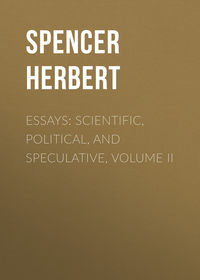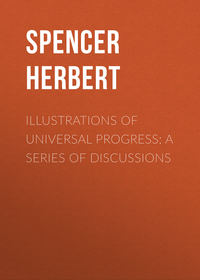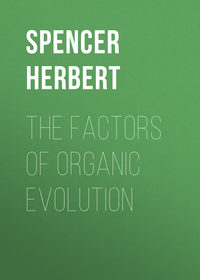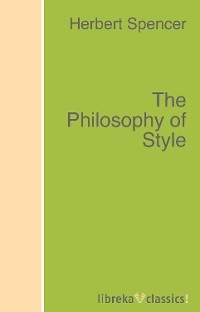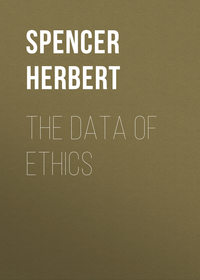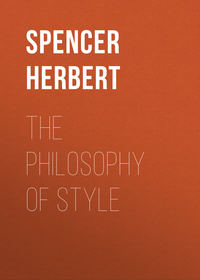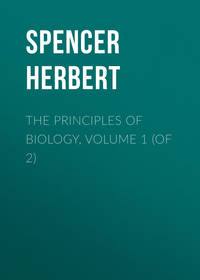 полная версия
полная версияFirst Principles
1
One of these generalizations is that currently known as “the Conservation of Force;” a second may be gathered from a published essay on “Progress: its Law and Cause;” a third is indicated in a paper on “Transcendental Physiology;” and there are several others.
2
The ideas to be developed in the second volume of the Principles of Biology the writer has already briefly expressed in sundry Review-Articles. Part IV. will work out a doctrine suggested in a paper on “The Laws of Organic Form,” published in the Medico-Chirurgical Review for January, 1859. The germ of Part V. is contained in the essay on “Transcendental Physiology:” See Essays, pp. 280–90. And in Part VI. will be unfolded certain views crudely expressed in a “Theory of Population,” published in the Westminster Review for April, 1852.
3
Respecting the several additions to be made to the Principles of Psychology, it seems needful only to say that Part V. is the unwritten division named in the preface to that work – a division of which the germ is contained in a note on page 544, and of which the scope has since been more definitely stated in a paper in the Medico-Chirurgical Review for Jan. 1859.
4
Of this treatise on Sociology a few small fragments may be found in already-published essays. Some of the ideas to be developed in Part II. are indicated in an article on “The Social Organism,” contained in the last number of the Westminster Review; those which Part V. will work out, may be gathered from the first half of a paper written some years since on “Manners and Fashion;” of Part VIII. the germs are contained in an article on the “Genesis of Science;” two papers on “The Origin and Function of Music” and “The Philosophy of Style,” contain some ideas to be embodied in Part IX.; and from a criticism of Mr. Bain’s work on “The Emotions and the Will,” in the last number of the Medico-Chirurgical Review, the central idea to be developed in Part X. may be inferred.
5
Part IV. of the Principles of Morality will be co-extensive (though not identical) with the first half of the writer’s Social Statics.
6
Those who may have before met with this term, will perceive that it is here used in quite a different sense.
7
These extracts are from an article entitled “Nature and God,” published in the National Review for October, 1860.
8
The substance of this chapter is nearly identical with the first half of an essay on “Progress: its Law and Cause,” which was originally published in the Westminster Review for April 1857: only a few unimportant additions and alterations have been made. The succeeding chapter, however, in which the subject is continued, is, with the exception of a fragment embodied in it, wholly new.
9
For detailed proof of these assertions see essay on Manners and Fashion.
10
Carpenter’s Prin. of Comp. Phys., p. 617.
11
For the psychological conclusions briefly set forth in this and the three sections following it, the justification will be found in the writer’s Principles of Psychology.
12
Some two years ago, I expressed to my friend Professor Huxley, my dissatisfaction with the current expression – “Conservation of Force;” assigning as reasons, first, that the word “conservation” implies a conserver and an act of conserving; and, second, that it does not imply the existence of the force before that particular manifestation of it with which we commence. In place of “conservation,” Professor Huxley suggested persistence. This entirely meets the first of the two objections; and though the second may be urged against it, no other word less faulty in this respect can be found. In the absence of a word specially coined for the purpose, it seems the best; and as such I adopt it.
13
This paragraph is a re-statement, somewhat amplified, of an idea set forth in the Medico-Chirurgical Review for January, 1859 (pp. 189 and 190); and contains the germ of the intended fifth part of the Principles of Psychology, which was withheld for the reasons given in the preface to that work.
14
For details see a paper on “The Physiology of Laughter,” published in Macmillan’s Magazine for March 1860.
15
After having for some years supposed myself alone in the belief that all motion is rhythmical, I discovered that my friend Professor Tyndall also held this doctrine.
16
The idea developed in this chapter originally formed part of an article on “Transcendental Physiology,” published in 1857. See Essays, pp. 279–290.
17
Had this paragraph, first published in the Westminster Review in 1857, been written after the appearance of Mr. Darwin’s work on The Origin of Species, it would doubtless have been otherwise expressed. Reference would have been made to the process of “natural selection,” as greatly facilitating the differentiations described. As it is, however, I prefer to let the passage stand in its original shape: partly because it seems to me that these successive changes of conditions would produce divergent varieties or species, apart from the influence of “natural selection” (though in less numerous ways as well as less rapidly); and partly because I conceive that in the absence of these successive changes of conditions, “natural selection” would effect comparatively little. Let me add that though these positions are not enunciated in The Origin of Species, yet a mutual friend gives me reason to think that Mr. Darwin would coincide in them; if he did not indeed consider them as tacitly implied in his work.
18
Sir David Brewster has recently been citing with approval, a calculation by M. Babinet, to the effect that on the hypothesis of nebular genesis, the matter of the Sun, when it filled the Earth’s orbit, must have taken 3181 years to rotate; and that therefore the hypothesis cannot be true. This calculation of M. Babinet may pair-off with that of M. Comte, who, contrariwise, made the time of this rotation agree very nearly with the Earth’s period of revolution round the Sun; for if M. Comte’s calculation involved a petitio principii, that of M. Babinet is manifestly based on two assumptions, both of which are gratuitous, and one of them totally inconsistent with the doctrine to be tested. He has evidently proceeded on the current supposition respecting the Sun’s internal density, which is not proved, and from which there are reasons for dissenting; and he has evidently taken for granted that all parts of the nebulous spheroid, when it filled the Earth’s orbit, had the same angular velocity; whereas if (as is implied in the nebular hypothesis, rationally understood) this spheroid resulted from the concentration of far more widely-diffused matter, the angular velocity of its equatorial portion would obviously be immensely greater than that of its central portion.
19
See paper “On the Inter-action of Natural Forces,” by Prof. Helmholtz, translated by Prof. Tyndall, and published in the Philosophical Magazine, supplement to Vol. XI. fourth series.
20
Until I recently consulted his “Outlines of Astronomy” on another question, I was not aware that so far back as 1833, Sir John Herschel had enunciated the doctrine that “the sun’s rays are the ultimate source of almost every motion which takes place on the surface of the earth.” He expressly includes all geologic, meteorologic, and vital actions; as also those which we produce by the combustion of coal. The late George Stephenson appears to have been wrongly credited with this last idea.


